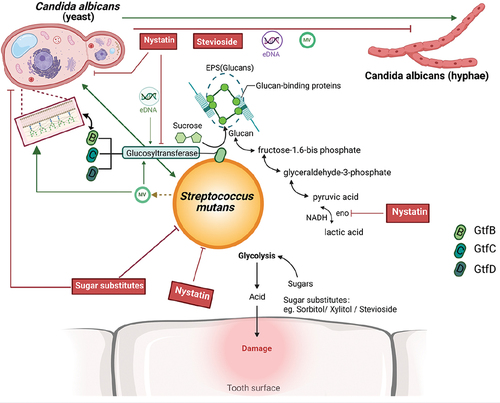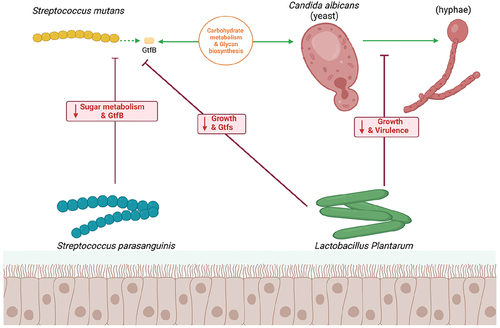Figures & data
Figure 1. Alteration of the Virulence of C. albicans effecting with S. mutans in the development of ECC. S. mutans prompt both the growth and pathogenesis of C. albicans in the oral via secreted and cell surface molecules. S. mutans secrete Glucosyltransferase that can attach firmly to the C. albicans cell wall that are critical for pathogenesis and virulence. EPSs present on the cell surface of S. mutans mediate the sugar metabolism transforming sucrose to glucan to sustain the virulence of S. mutans in the oral, which enhances their capacity to cariogenic. (Created with BioRender.com).

Table 1. The impact of various external factors in the dual-species interaction.
Figure 2. Model of the interplay between C. albicans, S. mutans, and Streptococcus parasanguinis/Lactobacillus plantarum in the human oral. S. mutans use GtfB to attach firmly to C. albicans to prompt each other’s growth which could regulate the carbohydrate metabolism and glycan biosynthesis. L. plantarum reduce the growth of both C. albicans and S. mutans; however, L. plantarum has also been shown to suppress the C. albicans virulence through the hyphal morphogenesis an·d inhibit the expression of GtfB of S. mutans. Like L. plantarum, S. parasanguinis also disturb the sugar metabolism and reduce the expression of GtfB of S. mutans. (Created with BioRender.com).

Data availability statement
I have shared my data in my review.
